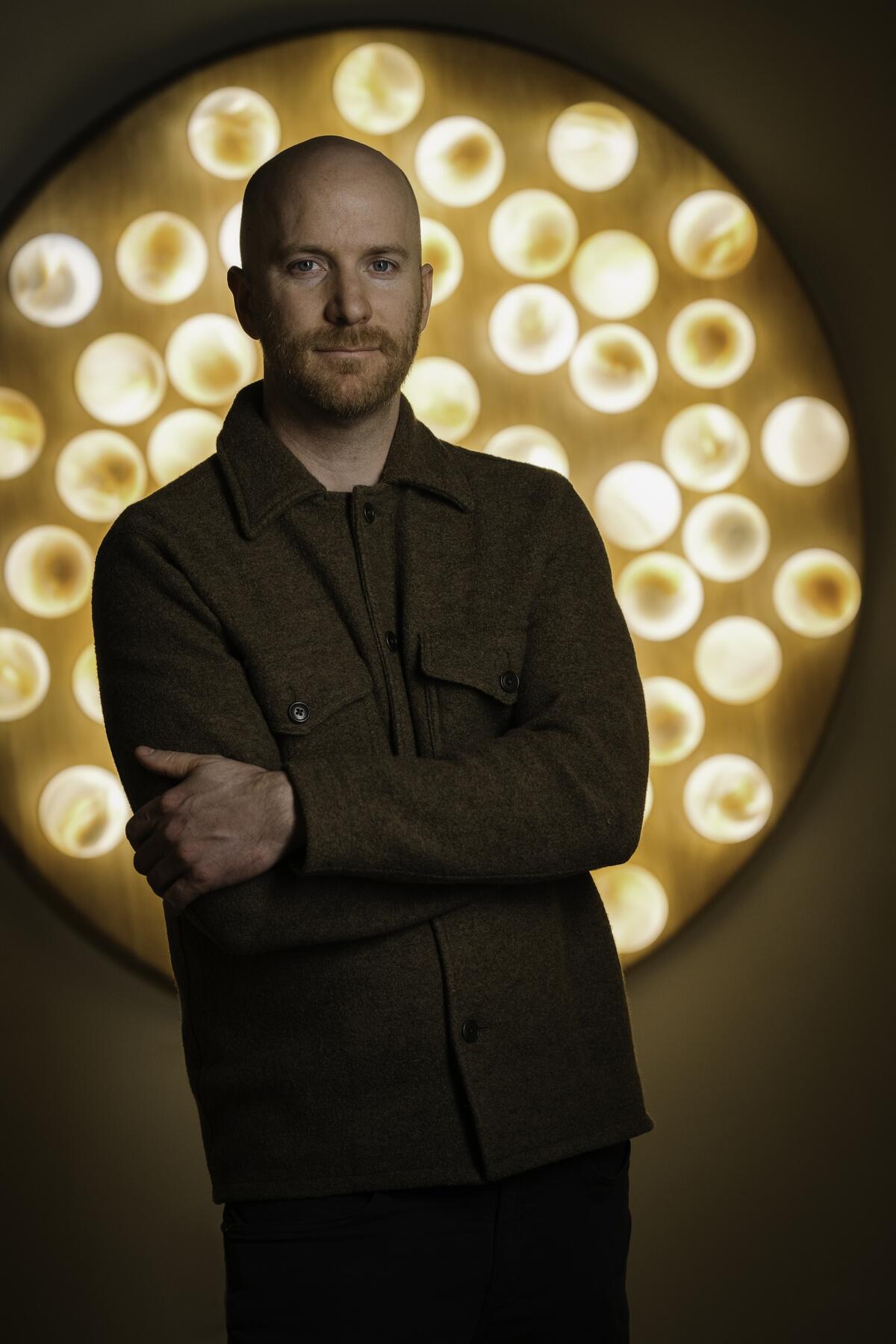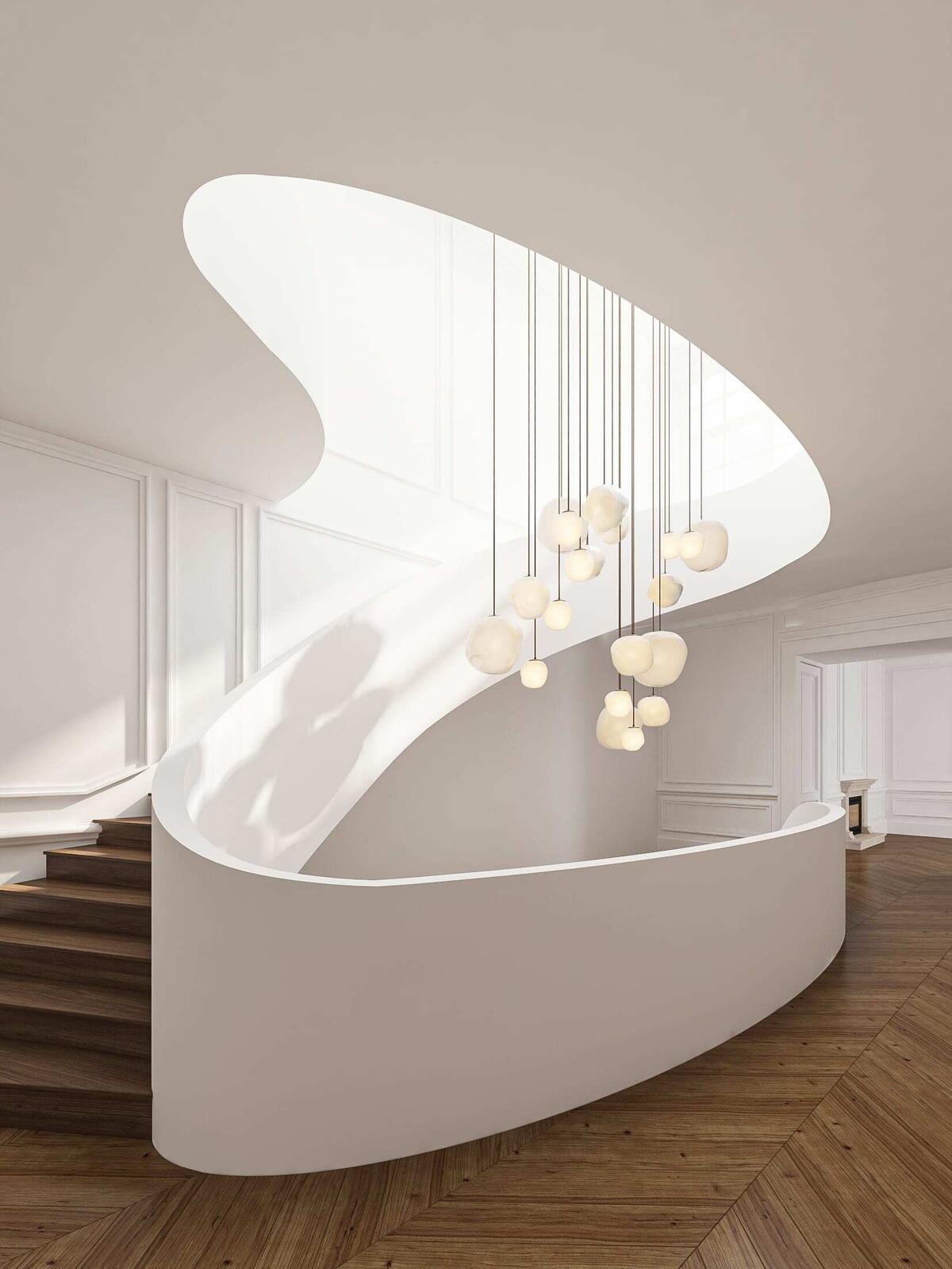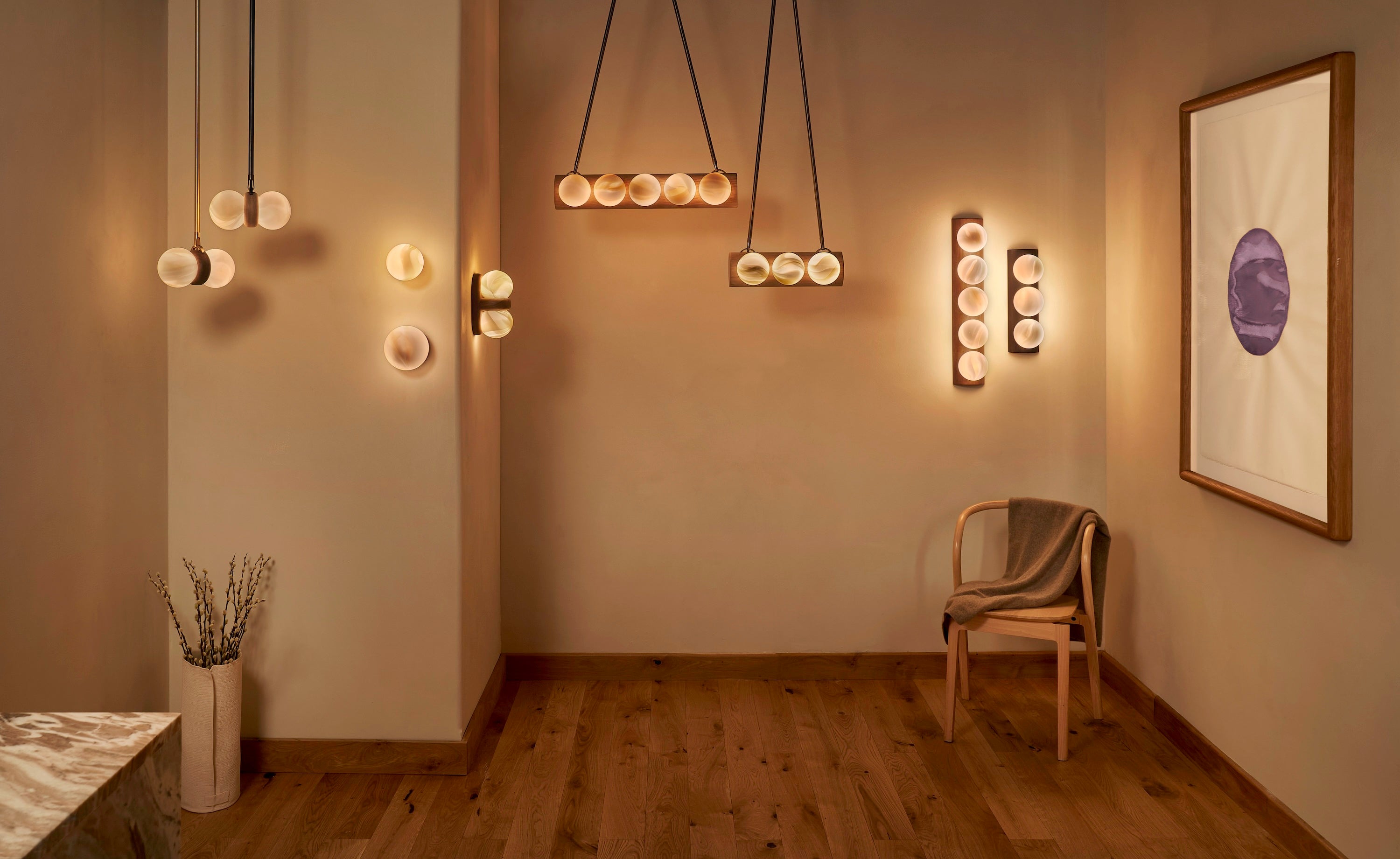When Jackson Schwartz was a teenager in western Wisconsin, he saw a glassblowing video that set the stage for his future career. Luckily for him, the nearby UW–River Falls campus offered glassblowing classes that allowed him to tap into this new interest while still in high school. “The process is very visceral, immediate,” he tells Business of Home. “You’re essentially playing with fire, which as a teenager is pretty thrilling.” After graduating, Schwartz moved down under at 19 to dive into the craft even more at the Australian National University School of Art & Design in Canberra, where he studied for four years before returning to Wisconsin in 2008 to take a visiting professor job at the same university where he first learned the craft.

“[While] teaching, I realized I love creating the most, and I needed to move into a studio path,” he says. He ended up partnering with one of his apprentices, Joe Limpert, to launch Hennepin Made, which was born in an 800-square-foot Minneapolis studio with equipment bought on eBay. The duo’s first project was a commission by a local designer for a series of lights—a job that showed Schwartz the power of such collaborations. “[Interior designers] are our people. They speak the same language. They have an inherent sense of what we do and why it’s valuable,” he says. “That was sort of the aha moment. I was like, ‘This is the arena that we want to be working in.’”
Schwartz and Limpert homed in on lighting, and after only one year in business, successfully pitched Room & Board as a retailer and designed an 18-piece collection for the brand. “That really set the foundation [for growth]. Now we can create jobs and a community [with] structure, consistency, safety and security for people in their employment, and [they can] feel like they’re part of something [creative] that is part of their identity,” he says.
The studio now employs a team of 35 people, and that community-oriented approach translates into the company’s design process as well. Once an idea is born, it’s conceptualized and then critiqued. Multiple people ask questions like: “Is it beautiful? Does it illuminate really well? Does it create the type of effect on space that we want?” says Schwartz. If the product gets the green light, it moves to the launch process, where the team fleshes out the details. All of the photography is done in-house, and a collection is ready to market anywhere between six months to 18 months after inception.
Schwartz’s favorite collection, Lacuna, was inspired by Midwestern skies. Much like real-life clouds, every single light in the 12-piece line is unique, starting with a sphere shape that’s manipulated using cork paddles. “Each one is really the personality of that team from that day, frozen in time. There’s an incredible amount of poetry to that.” The perfectly imperfect vessels are timeless pieces that can be appreciated by a wide audience. “When people look at them, it doesn’t matter if you have a really strong education in design or you’re just somebody walking by a window on the street—it’s a really attractive, elegant object,” he says. “If we can design things that really appeal in that way, that have some connection to lived experience—we all have experiences where we are staring at the clouds and allow our imagination to wander a bit—I think that’s a really well-executed idea.”

Hennepin Made is completely vertically integrated, with design, manufacturing and distribution all under the brand’s umbrella. “We previously had [external] distribution set up, and what I found was that while we had quite a few great partners, we really gained the most insight in working directly with the designers as an organization,” says Schwartz. “We found that we can actually improve our product, we can improve our service offering, and we can build depth into the relationship by working with them directly.” Three years ago, the leadership hired an internal sales team and got rid of almost all of their distribution; while a small percentage of the brand’s business is sold to end users, the bulk of sales come from architects, builders and interior designers. “We really see them as the interpreters of space and how people experience space,” he explains. “Everything we do, we evaluate how it services [these clients], and how it makes their jobs and lives easier. That’s proved to be really rewarding.”
Another core facet of the company’s ethos is sustainability. “I think as humans, we don’t actually know what we can and can’t do forever,” says Schwartz. “In a time where I think a lot of organizations want to claim that they’re sustainable, I think it’s more about the discovery and the curiosity of what is the most sustainable.” Some of the things the brand has been able to accomplish: a 100 percent zero-waste facility for glass production, completely biodegradable packing materials, and 500 rooftop solar panels that offset a little over half of the electricity for the entire facility.
Looking ahead, Hennepin Made will release its first outdoor lighting collection this summer and will continue to nurture the relationships it has built with designers around the country. “I think success looks like [building] the awareness within the design industry as a bespoke, handmade and American-made brand, and we have really great trade relationships. That’s where it starts, and then we are able to innovate and design new product because that’s the source of energy. We can keep advancing and exploring what’s possible with different materials,” says Schwartz. “If those two elements are working, then all of our people here have growth potential and are continuing to advance their careers within the studio.”
To learn more about Hennepin Made, check out its website and Instagram.





























